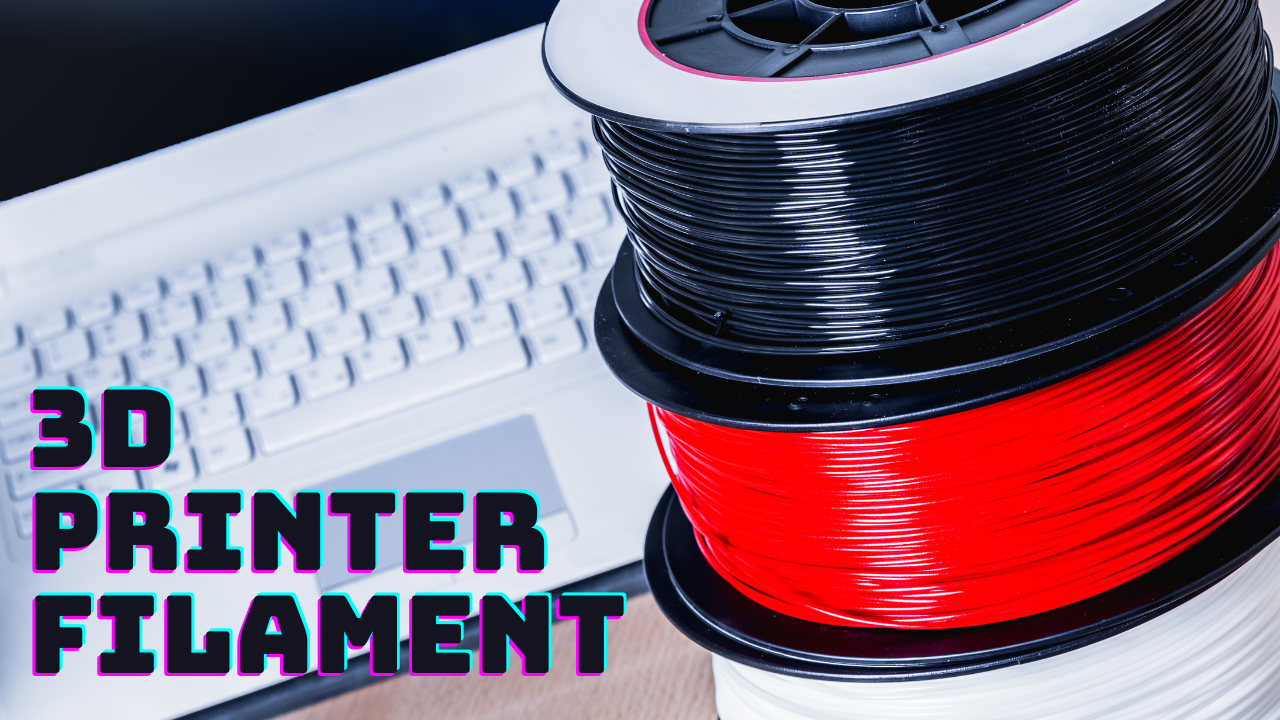3D Printer Filament: A Beginner’s Guide to Choosing the Right Material
If you own a 3D printer or are thinking about getting one, you’ve probably heard the term “filament.” But what exactly is 3D printer filament, and how do you choose the right one? In this guide, we’ll break down everything you need to know about 3D printer filaments in a simple and engaging way.
What is 3D Printer Filament?
3D printer filament is the material used in FDM (Fused Deposition Modeling) 3D printers. It comes in spools of plastic-like material, which is heated and extruded layer by layer to create a 3D object. Different filaments have unique properties, making some better for beginners and others more suited for advanced projects.
Common Types of 3D Printer Filaments
There are many types of 3D printer filaments, each with its own strengths and weaknesses. Here are the most commonly used ones:
1. PLA (Polylactic Acid) – Best for Beginners
- Easy to print – No heated bed required
- Eco-friendly – Made from renewable resources like corn starch
- Great for detailed prints – Perfect for beginners and hobbyists
- Not heat-resistant – Can deform in hot environments
2. ABS (Acrylonitrile Butadiene Styrene) – Strong and Durable
- Tough and impact-resistant – Great for functional parts
- Heat-resistant – Can handle higher temperatures
- Needs a heated bed – Prevents warping
- Produces fumes – Requires proper ventilation
3. PETG (Polyethylene Terephthalate Glycol) – Best of Both Worlds
- Strong like ABS but easier to print
- Good flexibility – Less likely to break under stress
- Water-resistant – Great for outdoor projects
- Requires slight adjustments in printer settings
4. TPU (Thermoplastic Polyurethane) – Flexible and Rubber-Like
- Bendable and stretchy – Great for making phone cases, gaskets, and wearable items
- Shock-absorbing – Good for protective gear
- Harder to print – Requires slow printing speeds
5. Nylon – Tough and Wear-Resistant
- Extremely strong and durable – Ideal for mechanical parts
- Flexible but tough – Withstands bending and impact
- Absorbs moisture – Needs to be stored in a dry place
- Requires high printing temperatures
6. Wood, Metal, and Specialty Filaments
- Wood Filament – Contains real wood fibers, giving prints a natural look.
- Metal Filament – Blended with metal powders for a metallic finish.
- Glow-in-the-Dark Filament – Fun for creative and decorative prints.
Choosing the Right Filament for Your Project
Selecting the right filament depends on what you want to print. Here’s a simple guide:
- For simple prints and beginner-friendly experience: Use PLA.
- For durable, functional parts: Go for ABS or PETG.
- For flexible prints: Choose TPU.
- For high-strength, wear-resistant parts: Nylon is your best option.
- For unique aesthetic projects: Try wood, metal, or glow-in-the-dark filaments.
Filament Diameter and Storage Tips
Most filaments come in two standard diameters: 1.75mm and 2.85mm. Make sure to check what size your printer supports before buying.
How to Store Filament Properly
- Keep it dry: Many filaments absorb moisture, which can affect print quality.
- Use airtight containers: Store spools in sealed bags or containers with silica gel.
- Avoid direct sunlight and heat: Keep filament in a cool, dark place to prevent degradation.
Troubleshooting Common Filament Issues
3D printing isn’t always perfect, and filament-related issues can occur. Here are some common problems and how to fix them:
- Filament not sticking to the bed?
- Ensure the print bed is level.
- Use adhesives like a glue stick or painter’s tape.
- Prints coming out brittle or weak?
- Increase print temperature for better layer bonding.
- Store filament properly to prevent moisture absorption.
- Nozzle clogging?
- Check for dust or debris in the filament.
- Use a higher-quality filament to avoid impurities.
Where to Buy 3D Printer Filament?
You can buy filament online or in specialty stores. Some trusted brands include:
- Hatchbox – High-quality PLA and PETG options.
- Overture – Affordable and reliable filaments.
- eSUN – Great for specialty filaments like TPU and wood.
- Prusament – Premium filaments with great consistency.
Final Thoughts
Choosing the right 3D printer filament can make a huge difference in your prints. Whether you’re a beginner using PLA or an advanced user experimenting with flexible or metal-infused filaments, understanding how each type works will help you achieve the best results.
By selecting the right filament, storing it properly, and troubleshooting common problems, you’ll be on your way to mastering 3D printing in no time. So go ahead, experiment with different filaments, and have fun bringing your creations to life!
Happy Printing!

